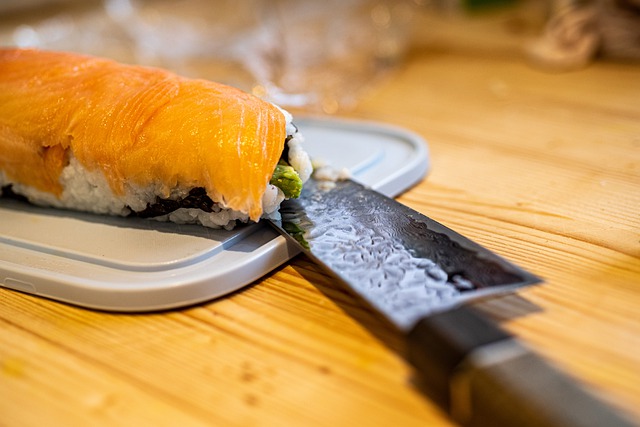Chef’s or chef’s knife is considered a versatile kitchen tool, is included in the «chef’s three» and allows you to perform up to 90% of the work on preparing products for cooking. Relatively recently in the Russian market the so-called Santoku – knives of Japanese production, whose set of functions includes the same tasks as the classic chef’s knife. It is even called a Japanese chef. Non-professional cooks do not easily understand the features of these two types of knives. Let’s figure out how a plumber is different from a chef’s knife, and which of these tools is more convenient and functional.
- Chef’s Knife features
This blade is not for nothing considered the main in the kitchen. And it’s not even in the name but in its versatility. No professional can do without it, and in the home kitchen it is very useful. The chef has a long wide blade with, a narrowing tip. The edge is in line with the shaft. The blade length can be 15-35 cm. The chef’s knife has the greatest weight at the base, thanks to the special design of the burden – it is wide in the front part and gradually narrows to the tip and down to the cutting edge. Thanks to this design «fifth» it is easy to cut thick and fibrous products, and the rest of the blade is designed for quick splitting and cutting large pieces.
- What’s different about santoku
While the Europeans were cutting, grinding and forging products with a chef knife, the Japanese developed their design of the «primary» knife. As a result, there was a santoku – a versatile chef knife for connoisseurs of oriental tools. Functional knives chef and santoku are slightly different. The name «santoku» is translated as «three advantages». It is intended for three main actions – cutting, grinding and splitting. However, some experts believe that there are 3 groups of products for which the knife is ideal – meat, fish, and vegetables. Let’s list the main differences between santoku and chef:
- the end of the knife is rounded, made in the form of a «sheep’s leg», without a sudden transition to the edge;
- flat blade;
- its weight is less;
- blade shorter – 13-18 cm;
- steel is stronger.
- We study the techniques of work
Santoku, thanks to the lowered tip of the blade, is more suitable for cutting, and the chef – is for classic cutting. Hence the differences in the length of the blade (santoku is a little shorter) and the features of the design of the blades. Professional cooks do not compare these two types of knives – for them, the differences in application techniques are obvious. None of them is better or worse, just different styles.
It’s harder for an ordinary cook to decide whether to pick a knife or a chef. To figure out what will suit you, analyze the features of work with each of them:
- The chef is optimally suited for classical cutting in a horizontal plane. During the cutting, the chef makes smooth swinging arm movements resembling the trajectory of the pendulum. The shape of the blade is precisely designed for this technique, allowing you to reduce the load on your hand.
- Santoku is more comfortable working in a vertical direction. It is a hybrid of a knife and an axe, so moving your hand up and down during cutting. Santoku cuts products efficiently, thanks to a straight blade from the heel to the tip. This knife has more contact lines with the cutting board than the chef.
- Santoku or chef — which one to choose?
So, if you cook a lot and often by cutting products, you should give preference to the chef’s knife. Excellent balancing and gentle blade contribute to the usual cutting «rolling».
If you do not know this technique perfectly, after a lot of work with vegetables and greenery, you are more comfortable making a sudden movement down and up, it is worth choosing a santoku.
Japanese santoku is often chosen for «brutal» design as a gift to a man-cook. The chef’s knife is considered more versatile and is usually available in the arsenal of housewives.

